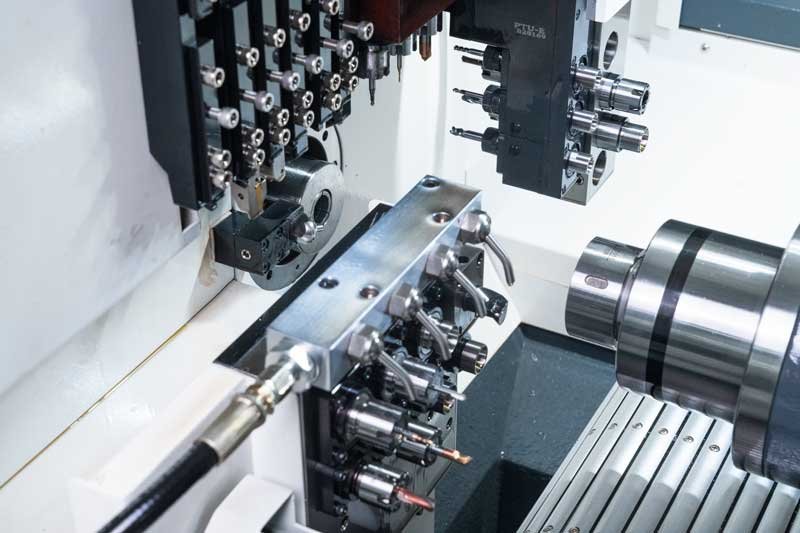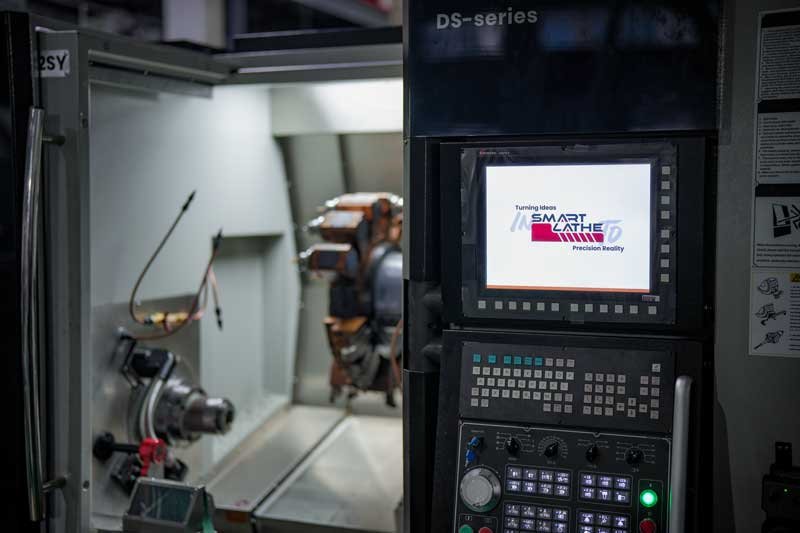How to Properly Choose a Dual-Spindle CNC Lathe
1. Dual-Spindle CNC Lathe
A dual-spindle CNC lathe is a type of CNC lathe that features two independent spindles, allowing for simultaneous processing of two workpieces, which significantly enhances production efficiency. Key characteristics of this lathe include high precision, high automation, and the ability to process two workpieces concurrently through its dual spindle configuration. This design effectively addresses the issue of processing multiple operations on a single fixture and offers advantages such as fast tool changing, high positioning accuracy, increased productivity, reduced labor costs, and high cost-performance ratio. Additionally, dual-spindle CNC lathes can integrate various automatic loading and unloading systems for unmanned operation, further optimizing space utilization.
Dual-spindle CNC lathes are widely used in the metal processing industry, especially in environments that require high precision and efficiency. The independent operation of two spindles allows for different machining tasks to be performed simultaneously, greatly improving productivity.
2. Factors to Consider When Choosing a Dual-Spindle CNC Lathe
Material Specifications
When selecting a dual-spindle lathe, it is essential to determine the diameter and length of the materials to be processed.
Processing Technology
Choosing the right dual-spindle lathe depends on the specific processing technologies and requirements involved.
3.Reliability and Maintenance of the CNC System
The CNC system of a dual-spindle lathe has specific computational requirements. Additionally, the convenience of maintaining accessories and the lathe itself is crucial for long-term production efficiency.
4.Characteristics of Various Dual-Spindle CNC Lathes
Gang Type Dual-Spindle CNC Lathe
The gang type dual-spindle CNC lathe features a compact footprint, quick tool change, and relatively low processing costs. Additionally, the gang type dual-spindle can expand its machining capabilities by adding accessories such as living tools, servo turret and so on.
Within the gang type dual-spindle CNC lathe, there are two types: bar material dual-spindle CNC lathes and single workpieces dual-spindle CNC lathes.
Powered Turret Type Dual-Spindle CNC Lathe
This design allows for the simultaneous processing of multiple operations, reducing the time spent on clamping and repositioning, which significantly boosts productivity. One spindle can perform turning operations while the other handles milling or drilling, completing various tasks simultaneously. The turret structure enables quick tool switching to meet diverse processing needs, enhancing flexibility for complex machining tasks.
Swiss Type Dual-Spindle CNC Lathe
Swiss type dual-spindle lathes feature a compact design that minimizes floor space and production costs. By reducing clamping times and preventing errors from repositioning, they improve machining precision and shorten the manufacturing process chain. This type of lathe can perform multiple operations such as turning, milling, drilling, boring, tapping, and engraving in one setup, making it suitable for batch processing of precision hardware and custom non-standard parts.
5.CNC System Selection and Maintenance Convenience
When choosing a CNC system, follow these principles:
Market Share Principle: Opt for a CNC system with a high market share, indicating proven performance and reliable after-sales support.
Stability and Reliability Principle: The selected CNC system should exhibit high stability and reliability to ensure continuous and efficient production.
Technical Service and After-Sales Support Principle: Consider the reputation of the manufacturer, the completeness of product documentation, availability of training for programming, operation, and maintenance personnel, and whether they offer long-term technical support and after-sales service.
6.Conclusion
Choosing a dual-spindle CNC lathe involves considering material specifications, processing requirements, CNC system reliability, and the manufacturer’s capacity for long-term technical support and after-sales service. If you're uncertain about which model suits your needs, you can contact SMARTLATHE's sales team. By providing your drawings and requirements, SMARTLATHE will assess the best model for you and also offer sample services and on-site equipment installation and debugging to support your manufacturing process.






